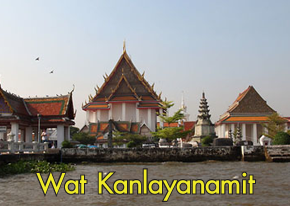Giant swing and Wat Suthat Thep Wararam
Giant swing and Wat Suthat Thep Wararam
เสาชิงช้า และ วัดสุทัศนเทพวราราม
Bangkok, Thailand
Wat Suthat and Giant Swing
Location : Bamrung Muang Road
Wat Suthat & Giant SwingWat Suthat Thepwararam , constructed in 1807, is one of the most important temples of Thailand and is regarded to have an excellent plan. The ordination hall is the longest in the country. The mural paintings inside were created by craftsmen in the Third Reign (1824-1851). The principal Buddha image is called "Phra Phuttha Tri Lokkachet" in the Subduing Mara position. Another building that should be mentioned is the vihara which is a replica of that of Mongkhon Bophit Temple in Ayutthaya Province. The middle door leaves at the front were engraved at the first phase by King Rama II (reigning 1809-1824). The principal image in this vihara is named Phra Si Sakkaya Muni. There are pavilions surrounding the main vihara and house 156 Buddha images.
In front of the temple is the famous Giant Swing
The Giant Swing, with a height of 21.15 metres and painted red, is a landmark of Bangkok. Some postcards of Bangkok contain photos of it. The existence of a red giant swing in front of Suthat Temple in Bangkok is an indicator of the once strong influence of Brahmanism in Thailand. The giant swing was built only two years after the establishment of Bangkok as the new capital in 1782. The story of its origin began when a Brahman named Kratai was granted an audience with King Rama I (1782-1809) and asked the King's permission to be the upholder of Brahmanism in Siam and to build a Brahmanic temple and a swing for conducting Brahmanic ceremonies. The King granted his requests and soon not one but three Brahmanic temples and a swing were built in the same area in the centre of the old city in 1784.
No evidence tells how high the original swing was. But over a hundred years later the old swing was decaying and was replaced with a new one made of teak in 1920 in the reign of King Rama VI. Then in 1947 and 1970, the swing was twice renovated. And after this swing stood majestically as one of Bangkok's landmarks for 36 years, its condition became deteriorated. So, it was again replaced with one made of teak in 2006. With a height of 21.15 metres from the base to the top, the swing is considered a giant.
The Swinging Ceremony was a Brahmanic ceremony annually performed there in the past as a merit-making rite, to celebrate the new year, to propitiate Brahmanic gods and to ask for their blessings. The ceremony was part of a combination of two rites called triyamphawai and tripawai. The former was held to receive Siva, one of the Brahmanic sacred triad along with Brahma and Vishnu, who descended from heaven to the earth, and the latter to welcome Vishnu who came down later.
It was believed that Siva visited the earth once a year on the 7th day of the first waxing moon and stayed until the 1st of the first waning moon, which was also the day when Vishnu descended from heaven. Vishnu was said to ascend heaven again on the 5th of the same waning moon. But the ceremony had been moved back to the second lunar month when the river water was at a low level and floods were unlikely (whereas the 1st lunar month was still in the flooding season.).
According to The Ceremonies of 12 Months written by king Rama V (1868-1910), there was no problem in changing the dates of the ceremony because Brahmans believed that they were the only people who held a key to the gate of heaven. If they did not chant incantations to open it, the gods would not be able to come down. The triyamphawai ceremony was grandly organised. The highlight of the ceremony was when three groups of four Brahmans each, called naliwan, rode on the giant swing, trying to catch, by mouth, a bag of silver coins* attached to a supporting pole.
After bringing down the bag, there was also a dancing performance called ram saneng in which 12 Brahmans (naliwan) danced while each sprinkling holy water from a horn in his hand onto the audience. This was followed by a celebratory parade attended by Phraya Yuen Chingcha and about 800 people. In the farewell ceremony to Siva, there were distributions of propitiatory food to the onlookers. As to the tripawai ceremony, it was held merely as a routine. It may be because Vishnu came down in a waning moon and people considered the day he returned to heaven as an unlucky day. There was thus no distribution of the sacrifice to the participants.
... PROMOTION NOT FOUND, Please check back later ....
Giant swing and Wat Suthat Thep Wararam
| CLIENT: | Giant swing and Wat Suthat Thep Wararam |
| LOCATION: | Map |
| CATEGORIES: | Travel |
| PHONE: | |
| WEBSITE: | http://www.thaiwaysmagazine.com/bangkok/thai_temples/wat_suthat_thai_temples.html |
| MODIFIED DATE: | July 14, 2025 |
Share this place.
Add to Wishlist.




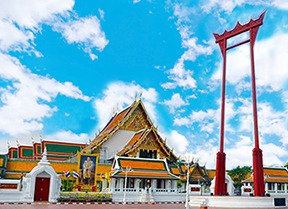


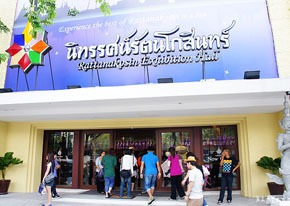

.png)
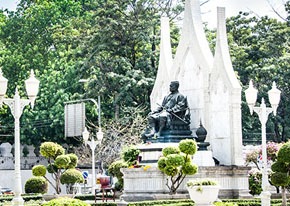
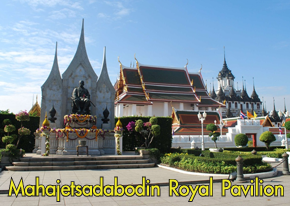
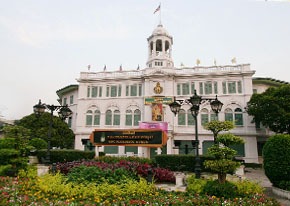
.png)
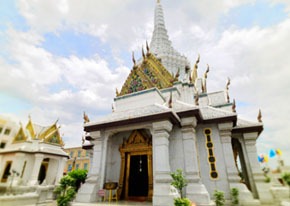

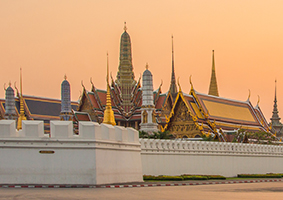
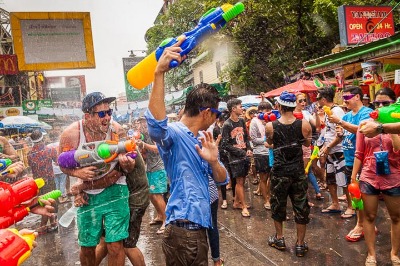
.png)
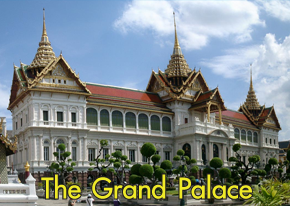
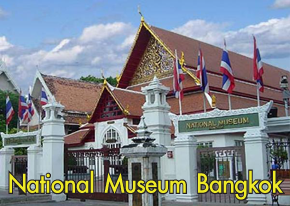




.png)
